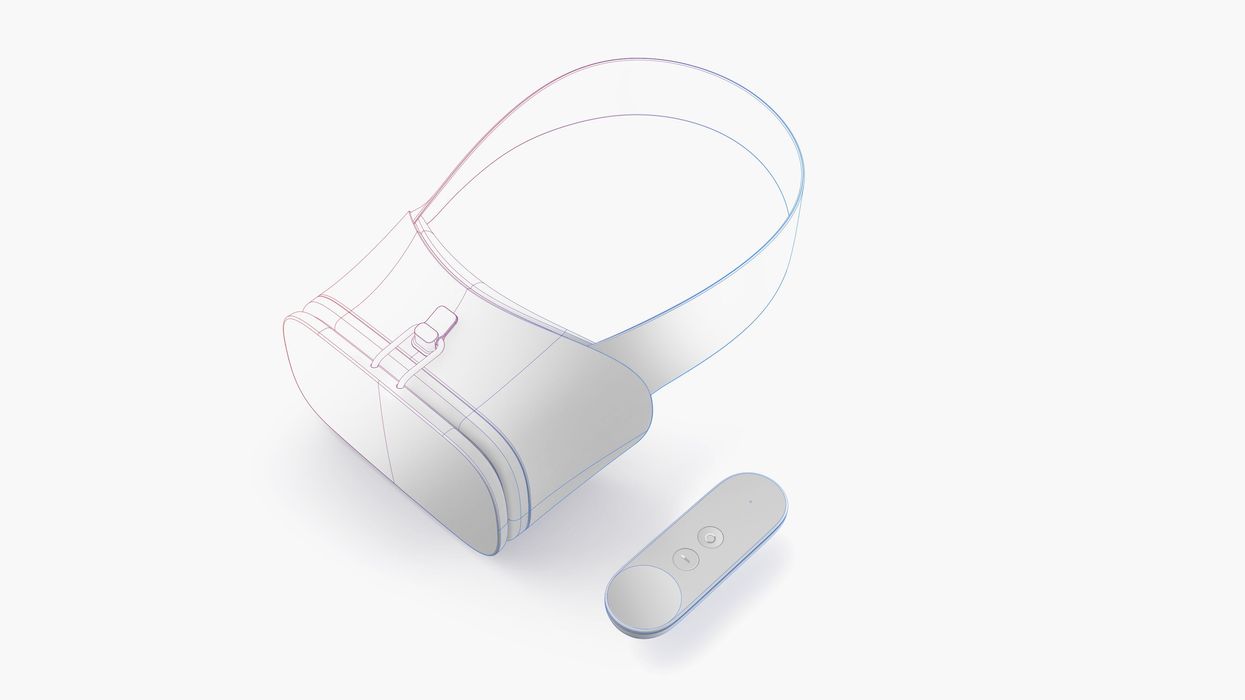What Google's Daydream VR Platform Means For Filmmakers
Google has drawn a line in the sand. Will audiences be as committed?

Yesterday, at the 2016 I/O, Google released details of Daydream, a VR hardware and software system powered by Android. And this comes just after the announcement earlier this week that Google and GoPro would begin shipping the Odyssey, a 16 camera VR rig and part of Google Jump. Both of these developments make it clear that Google is trying to corner yet another technical market.
Daydream is a VR platform that's partly an update to the Google Cardboard, their disposable headset that's been on the market for two years. By fall, the company hopes to have the first Daydream-enabled Android phones on the market, but according to the Verge, "where Google Cardboard worked with almost any smartphone, Daydream will only work on new phones with specific components like special sensors and screens." Daydream phones will be centered around the VR environment, with new versions of YouTube, Maps, and Google Photos. It's also recruited a number of outside media companies to develop apps for the system, including streaming platforms like Netflix and gaming companies like Ubisoft and Electronic Arts.
Google's bold move to put itself at the vanguard of the VR revolution is a very strong signal to the rest of the industry that there is a future in VR, even if it's not quite clear yet.
These partnerships are the big news for filmmakers who might be interested in creating 360-degree films or other content for the VR space. In addition to Netflix (which already has content on Samsung's Gear VR), Daydream will partner with HBO, The New York Times, CNN and other media outlets. (Hulu's app might look like the one it has already contributed to the Gear VR, i.e. a mix of flatscreen and 360 degree.) And perhaps most interestingly for filmmakers, IMAX will be partnering to show some of its films in Daydream; the company has also partnered with Lionsgate in order to produce VR game tie-ins to movies like John Wick and Now You See Me 2.
Google's announcement is a line in the sand, and while there's no doubt that the company's commitment to VR is strong, for this bold power-play to succeed, they will have to count on consumer commitment being just as strong. Beyond the new phones, consumers who want to Daydream will also need to purchase a viewer, either from the company or, as with Cardboard, from a third-party manufacturer. And, as the Verge notes, currently all VR platforms are focused more on "consumption than creation." This will no doubt change in the coming months, and Google's bold move to put itself at the vanguard of the VR revolution is a very strong signal to the rest of the industry that there is a future in VR, even if it's not quite clear yet. There's currently no word on how much any of this will come to resemble Lawnmower Man, but we'll be sure to keep you posted on developments as they happen.











